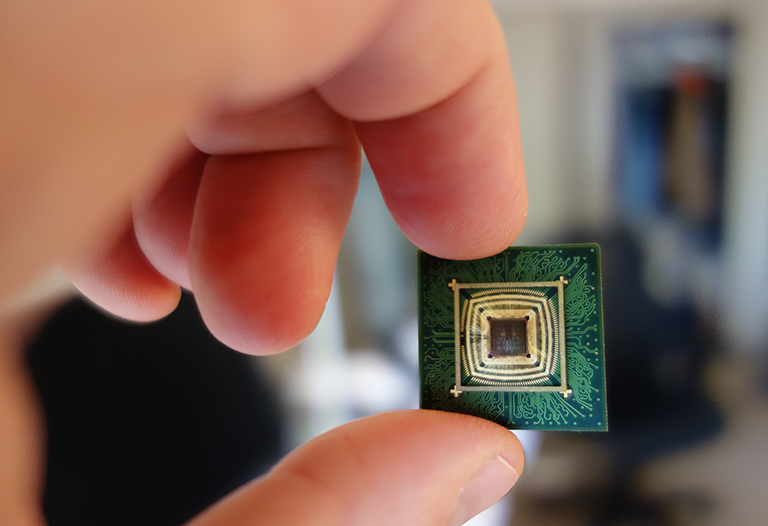Dean Nancy Allbritton explains what advancing chips and semiconductor research means for the College of Engineering, the UW and the state of Washington.
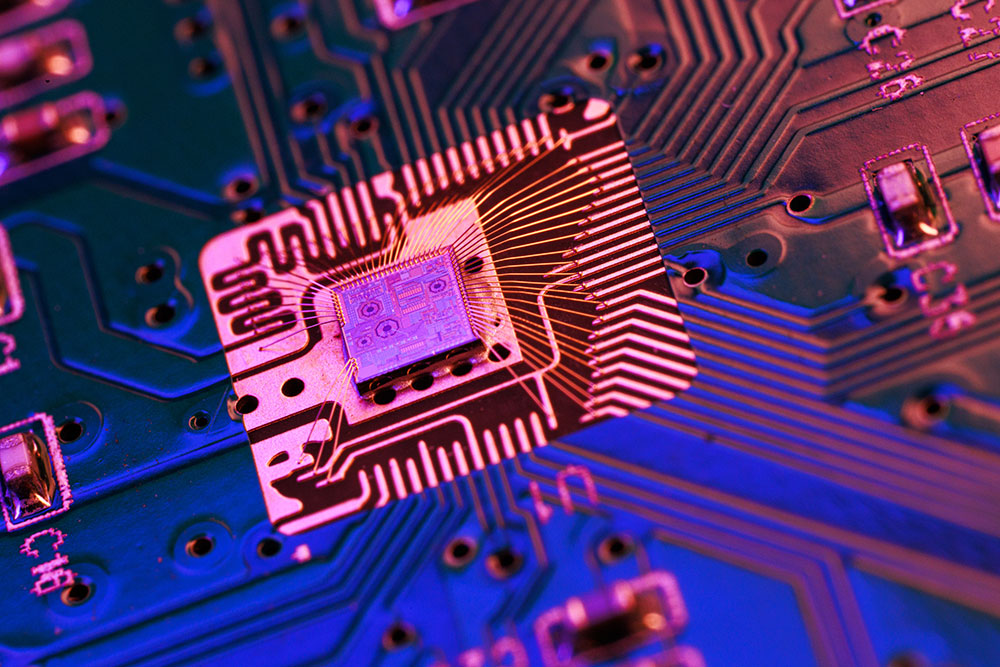
A recently designed microchip from the lab of Chris Rudell, a professor of electrical and computer engineering. Photo by Ryan Hoover
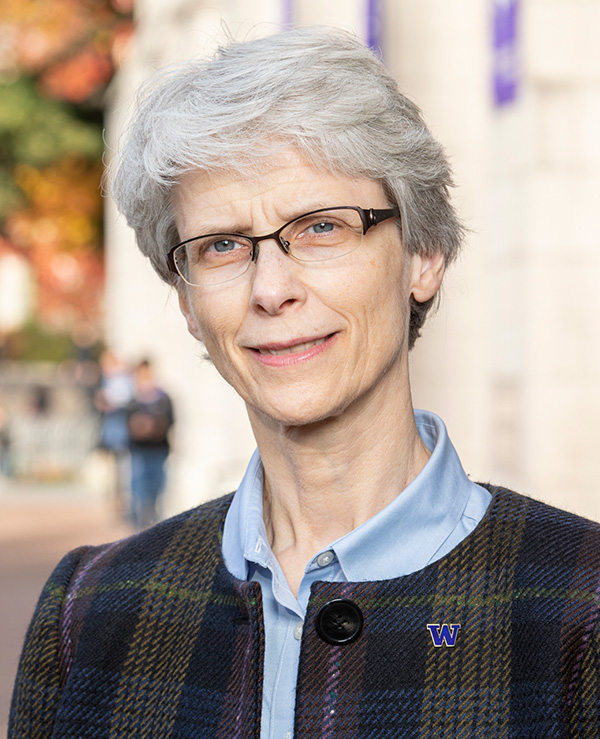
Nancy Allbritton, Frank & Julie Jungers Dean of the College of Engineering
The surging demand for semiconductors and microchips, driven by the widespread use of electronic devices, has elevated their significance in technology, trade and innovation. Semiconductors — primarily silicon-based materials — serve as essential components in constructing electrical devices. Microchips (“chips” for short) consist of multiple semiconductor elements and play a pivotal role in powering everyday electronics such as computers, smartphones and appliances. Together, semiconductors and chips have evolved into strategic assets for nations like the U.S.
Nancy Allbritton, the Frank & Julie Jungers Dean of the College of Engineering, discusses how the UW and the state of Washington are poised to contribute significantly to research and workforce development, and what this means for the UW Engineering community.
Why have we been hearing about semiconductors and chips lately?
In August 2022, the federal government enacted the CHIPS and Science Act, a $250 billion investment in domestic chip technology research, manufacturing and workforce development. U.S. Senator Maria Cantwell of Washington played a key role in shaping the act, which aims to reduce costs, generate employment, fortify supply chains and establish the U.S. as a global leader in chip technology. Industry is also bolstering its investment in research and development, and competition is ramping up across universities to secure funding.
But a pivotal challenge lies in workforce training. Despite the semiconductor industry's anticipated growth in the U.S., there's a significant shortage in workforce size and diversity. Washington state alone faces an estimated gap of 60,000 STEM-trained workers by 2026 to meet the rising demand for chips. Across the UW, we view this as a remarkable opportunity to address the state's job needs.
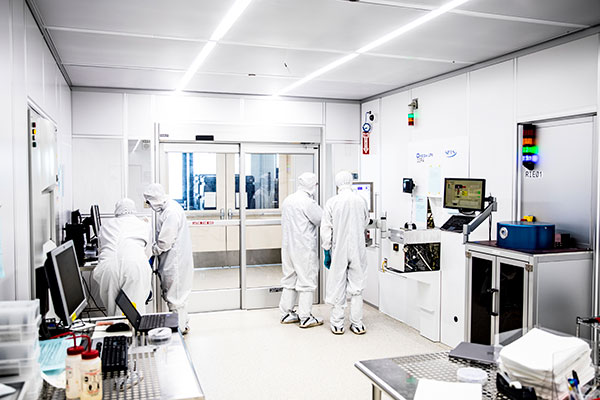
Research facilities such as the Washington Nanofabrication Facility, which is part of the UW Institute for Nano-Engineered Systems, help make the UW uniquely positioned to be a leader in chip technology. Photo by Dennis Wise
What makes the UW uniquely positioned to be a leader in chip technology?
The UW is already at the forefront of developing next-gen chips and training the workforce to build them. As a tier-one research university, we have cutting-edge facilities such as the Washington Nanofabrication Facility, and partners like the Pacific Northwest National Laboratory. Plus, the Pacific Northwest is a tech and cloud computing hub. Collaborating with tech partners in the region and with key semiconductor industry leaders such as Micron Technology in Idaho and Intel in Oregon, we're establishing a geographic hub for chip technology innovation.
What efforts are underway at the UW?
The UW is fostering collaborations across campus, and advancing public-private partnerships with industry, government and other universities. In chip technology research, interdisciplinary STEM collaboration is crucial. Faculty from engineering, physics, chemistry, computer science and other sciences are actively working together. Mo Li, a professor of electrical and computer engineering and physics, heads up the UW’s CHIPS and Science Committee (jointly launched by the College of Engineering and College of Arts and Sciences), which is exploring regional workforce training needs and funding opportunities.
Tell us more about some of the collaborations driving this work.
Last summer, the UW joined the Northwest University Semiconductor Network, led by Micron, to enhance experiential learning opportunities in the semiconductor ecosystem, prioritizing access for underrepresented students, particularly in rural and tribal communities.
In September, backed by $10 million from the CHIPS and Science Act via the National Science Foundation (NSF), we initiated UPWARDS, a collaboration of six U.S. and five Japanese universities, working with Micron to expand semiconductor innovation and workforce training. The UW is the lead institution for UPWARDS, with efforts being spearheaded by Professor Li. Micron and Tokyo Electron, another industry leader, have contributed $10 million each for UPWARDS. This spring the UW will host an UPWARDS workshop which will bring many of these partners together on our campus.
Additionally, the Advancing Semiconductor Technologies in the Northwest, led by Oregon State University, aims to cultivate a semiconductor ecosystem in the Pacific Northwest. This work is supported by an NSF Engine Development Award and Xiaodong Xu, a professor of materials science and engineering and physics, is the UW’s lead.
What does all of this activity mean for engineering students?
Advancing chip technologies involves every area of engineering and computer science in our college: design, prototyping, materials research, applications, manufacturing, and systems engineering to name a few. This means hands-on involvement in groundbreaking research for all engineering students, a significant impact on Washington and beyond, and a lot of job opportunities after graduation. Many of the recently funded initiatives, like UPWARDS, prioritize diversity and equity, incorporating measures to elevate historically underrepresented students in research endeavors.
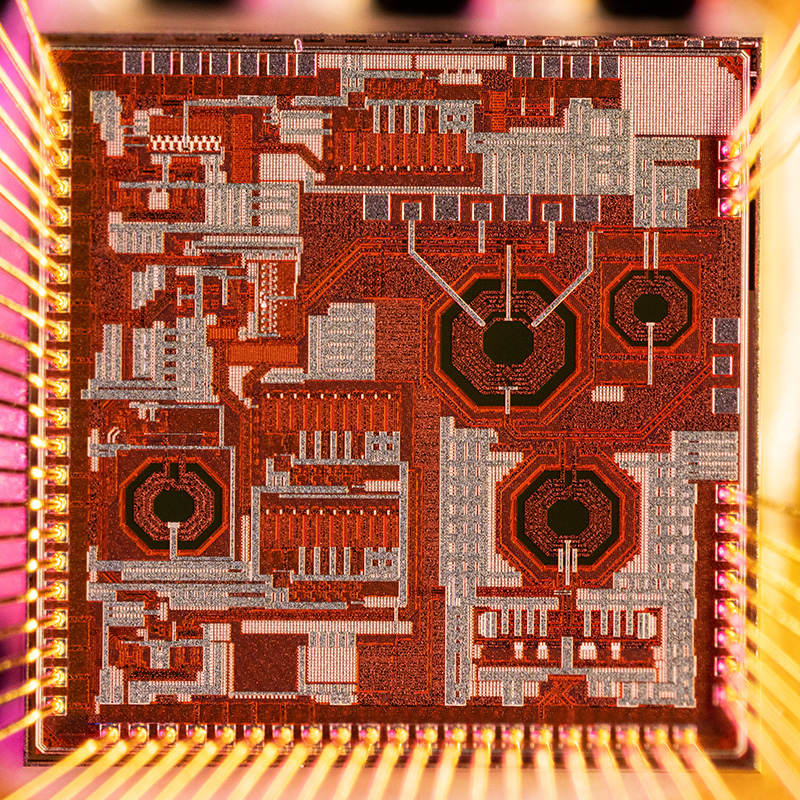
A close-up view of the chip shown above from the Rudell lab. These chips have a broad range of applications, including use in satellite communications and radar, shipping, aviation and space industries, and 5G technologies. Photo by Ryan Hoover
You and UW President Ana Mari Cauce are part of a coalition of women presidents and deans of engineering of the Association of American Universities (AAU) who are developing goals to expand and diversify the semiconductor workforce. Tell us about this collaboration.
AAU institutions are leaders in scholarship, innovation and solutions that contribute to scientific progress and economic security and well-being. Each of our universities is engaged in semiconductor education and research, and each is committed to advancing women and historically underrepresented students in STEM fields.
The EDGE Consortium, our coalition, strives to enhance semiconductor education accessibility and alignment with industry workforce needs. We recognize that the CHIPS and Science Act’s goals won’t be achieved unless historically marginalized groups are included from the start, so we are committed to doubling the number of industry-ready women and people of color for semiconductor-related careers. It’s important to have women leaders steering this work to show that women can be — and are — drivers of change, especially in STEM.
What excites you most about this growing area for UW Engineering?
I'm truly impressed by the significant federal investment provided by the CHIPS and Science Act to broaden access to STEM careers. It enables us to prepare engineers to become global citizens and leaders, poised to shape a better economy and transform the world.
Our success hinges on invaluable collaborations — from local to global. On campus, partners in the College of Arts and Sciences and the UW President’s office drive this effort. Recognition also goes to industry partners and collaborators at other institutions. I also want to acknowledge and thank the elected officials who are advocating for this transformative work that promises to positively affect lives and economic well-being.
Investing in chips and science at the UW
National and local leaders convened at the UW last spring to discuss the CHIPS and Science Act and investing in scientific discovery.
Originally published January 8, 2024
